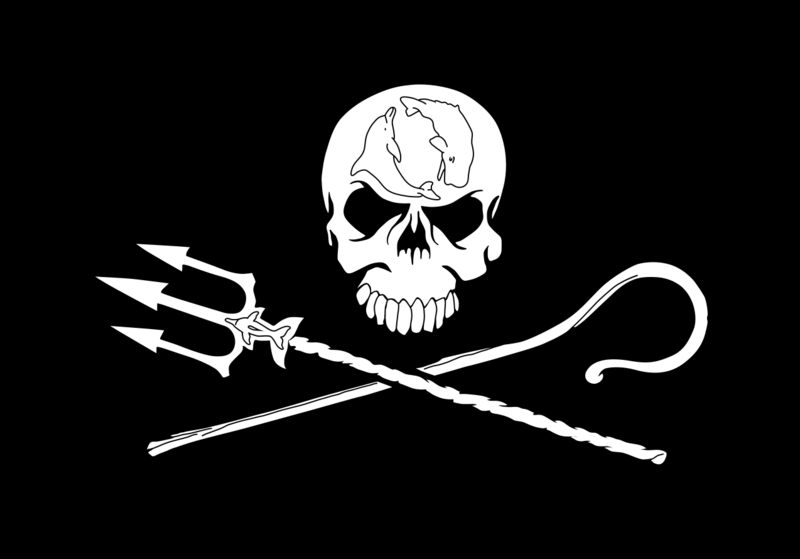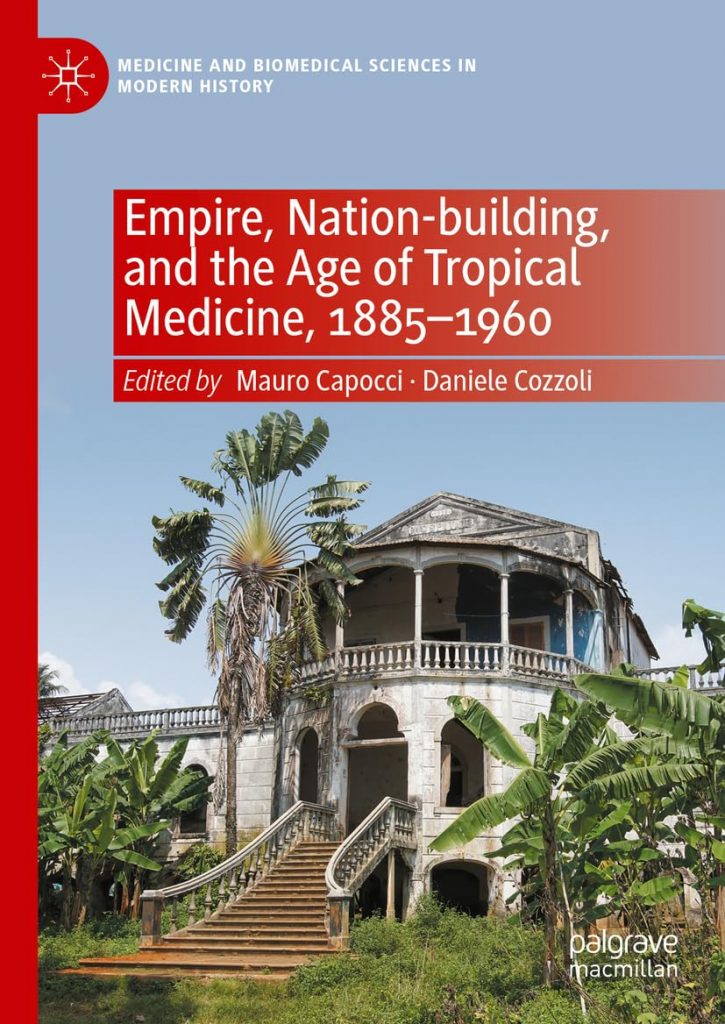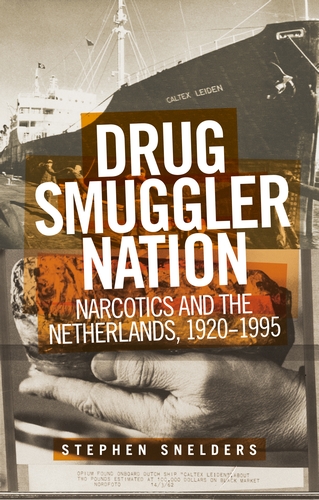Paul Watson werd vrijgelaten op 17 december 2024, vijf maanden na zijn arrestatie.
Ecopiraten
De meest bekende piraat ter wereld, Paul Watson, zit al meer dan vier maanden achter tralies in een gevangenis op Groenland. Internationale beroemdheden hebben om zijn vrijlating gevraagd. Maar de Japanse regering heeft nog een appeltje te schillen met de piraat. Zo ramde diens schip de Sea Shepherd II in 1990 twee Japanse drijfnetschepen in de Stille Oceaan en bracht naar zeggen voor meer dan twee miljoen dollar schade aan. En de Japanse walvisjacht is al decennia een doelwit voor de piraat en zijn medestanders: de ecopiraten.
Dit jaar is een nieuw Japans ‘moederschip’ voor de walvisvangst de oceaan opgegaan. De Kangei Maru kan de zware walvissen geharpoeneerd door begeleidende jagers op dek takelen en verwerken tot vlees voor de Japanse walvisindustrie. De piraat was in zijn schip naar de Stille Oceaan vertrokken met als doel de activiteiten van de Kangei Maru onmogelijk te maken. Aangekomen op Groenland werd hij echter gearresteerd. Groenland is weliswaar een autonome provincie van Denemarken, maar justitie en buitenlandse zaken vallen nog steeds onder de Denen. En ook de Denen hebben nog een appeltje te schillen met de piraat. In 1986 kwam het op de Deense Faeröer eilanden tot aanvallen van bewoners op de Sea Shepherd II, toen die een einde wilde maken aan de lokale jacht op grienden, een van de grootste soorten dolfijnen. De piraat werd op Groenland gearresteerd op basis van een opsporingsbevel dat Interpol al in 2012 op verzoek van Japan voor hem had uitgevaardigd, en de Deense rechtbank overweegt nu het Japanse verzoek to uitlevering.
Sinds de piraat in 1979 voor het eerst een walvisjager ramde zijn de activiteiten van de ecopiraten voor velen een bron van fascinatie, voor anderen een daad van terrorisme. In mijn bijdrage aan de net verschenen bundel over groene criminologie, geredigeerd doorDaan van Uhm. bespreek ik de ontwikkeling van ecopiraterij vanuit zowel het perspectief van de milieustrijd, als de historische traditie van piraterij.
Drank & Drugs in de achttiende eeuw
Drugs zoals we het begrip vandaag kennen is een uitvinding van de twintigste eeuw. De achttiende-eeuwer kende geen overkoepelend begrip ‘drugs’. Ook een begrip als ‘verslaving’ was nog onbekend. Maar er waren wel middelen als opium beschikbaar, net als andere en relatief nieuwe psychoactieve middelen als koffie, thee en tabak. En er werd veel alcohol gedronken.
Voor het Jaarboek De Achttiende Eeuw was ik gastredacteur bij het samenstellen van een speciale bijdrage over drank en drugs in de achttiende eeuw, met bijdragen over o.a. jeneverepidemie en over opium in Nederlands-Indie.
The colonial background of our drug policies
Much has been said about the racist character of the ‘War on Drugs’. To explore this character more fully I take a look at drug policies in the Dutch colonial empire. In the second half of the nineteenth century, the Dutch started to modernize their empire and attempted to build ‘modern colonial states’ in their territories in the East Indies (present-day Indonesia) and West Indies (Suriname/Dutch Guiana, and the Dutch Caribbean islands). The endemic presence of certain diseases and behaviours was felt to threaten the colonial project. Colonial medicine played a key role in managing these ‘problems’. My chapter in the recently published volume Empire, Nation-Building, and the Age of Tropical Medicine, 1885-1960 investigates and compares polices and attitudes around two very different cases: leprosy and drug abuse. Colonial policies towards these cases show remarkable similarities: in both, a translation took place of an international global ‘colonial framing’. Non-white leprosy sufferers and drug users from different ethnic and cultural backgrounds (African, Indian, Chinese, Indonesian) were constructed by colonial medicine as being passive, undisciplined, disturbing labour efficiency, and threatening to contaminate whites (through sexual contacts and other means) or to seduce them in ‘going native’. Colonial strategies against these dangers included compulsory segregation of leprosy sufferers and the first prohibitive drug laws in Dutch territories. These policies created a legacy of a colonial cultural archive that is still around today.
New history of psychedelics

Today’s psychedelic renaissance has also led to new interest in the history of psychedelics. MIT Press has now published a fascinating volume with histories of psychedelics from all across the world, edited by Erika Dyck and Chris Elcock.
I have contributed with a chapter on the history of psychedelics in the Netherlands. This chapter is for a large part based on my research for my PhD thesis that was undertaken in the 1990s. Since then not much has been done in this field. I have added some new research on the psychedelic underground production and trafficking that I have done in recent years for my book on the Netherlands as Drug Smuggler Nation.
David Claassen (not Claessen, as his name appears in the book due to an unfortunate typo) was so kind to show me his bachelor thesis on LSD in Dutch newspapers 1951-1966, for which he did research in the newspaper database Delpher (which did not yet exist when I did my research), coming up with some new material. For his thesis, see David Claassen (2020), LSD: Van wondermiddel tot gevaarlijke drug. Nederlandse kranten over LSD 1951-1966. https://studenttheses.universiteitleiden.nl/handle/1887/3069662?solr_nav%5Bid%5D=3fca44b36b7b5fe73c2a&solr_nav%5Bpage%5D=5&solr_nav%5Boffset%5D=7.
Expanding Mindscapes: A Global History of Psychedelics is now available in book stores.
Paperback edition Drug Smuggler Nation out now
My history of Dutch drug smuggling, Drug Smuggler Nation: Narcotics and the Netherlands, 1920-1995, was until recently only available in an expensive paperback. Manchester University Press has now published the much more affordable paperback – with a few minor corrections.
Drugssmokkelland: hoe Nederland een paradijs voor drugssmokkel werd. Een Nederlandstalige publieksversie
De resultaten van mijn onderzoek naar de geschiedenis van de drugssmokkel in Nederland zijn in eerste instantie vastgelegd in een academische Engelstalige versie voor Manchester University Press. Sinds die publicatie kreeg ik steeds meer geluiden te horen dat het jammer was dat een boek over zo’n actueel en maatschappelijk relevant onderwerp niet heel toegankelijk was voor de niet-academi-sche Nederlandse lezers en lezeressen. Bovendien eindigt het boek rond 1995, terwijl we ondertussen alweer een kwart eeuw verder zijn. Ik heb daarom, na overleg met en met instemming van de Engelse uitgever, een nieuwe versie geschreven bestemd voor de Nederlandstalige publieksmarkt. Op 14 oktober verschijnt deze versie bij de Walburg Pers.
Dit is geen directe vertaling van het Engelse boek. In vergelijking met de Engelstalige rapportage is enerzijds de tekst met bevindingen met ongeveer de helft teruggebracht. Theoretische en historiografische gedeeltes zijn tot een minimum teruggebracht. Anderzijds is er nieuw materiaal toegevoegd: nieuwe verhalen over de drugssmokkel van de afgelopen eeuw die illustratief zijn voor het functioneren ervan, en een heel nieuw hoofdstuk over de situatie vandaag de dag en de ontwikkelingen in de afgelopen vijfentwintig jaar. Leidraad voor het boek is een nieuwe metafoor voor het functioneren van de drugssmokkel: niet de Godfathers en Scarfaces die zulke geliefde rolmodellen zijn voor jonge would-be criminelen, maar Marten Toonders stripfiguren Bul Super en Hiep Hieper.
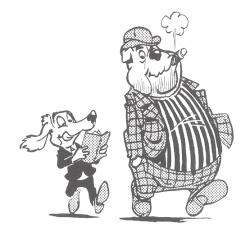
Bul Super en Hiep Hieper debuteerden in 1944 en vertonen duidelijke overeenkomsten met de onderwereldfiguren uit Toonders tijd. Het zijn opportunistische vrije jongens zonder moraal, steeds op zoek naar nieuwe en meestal illegale activiteiten om geld te verdienen. Super wordt door Hieper de baas genoemd, hetgeen slechts betekent dat de eerste de laatste domineert door zijn persoonlijkheid en fysieke kracht. Super en Hieper zijn individualisten. Tegelijk zijn ze sociaal en cultureel ingebed in de onderwereld van hun stad Rommeldam: door hun sociale contacten en ontmoetingsplekken, en door een gedeelde culturele kijk op de wereld. De beide ‘zakenlieden’ hebben een uitgebreid netwerk van gelijkgestemde onderwereldfiguren in de Rommeldamse kroegen en stegen. Regelmatig slagen ze er ook in tijdelijke verbonden te sluiten met de Rommeldamse bovenwereld. Maar er is geen sprake van een georganiseerde misdaad, slechts van wisselende samenwerkingsverbanden. Alleen in 1966 lijkt Super een stap verder te kunnen gaan als hij in het verhaal Bombom de Geweldige de onderwereld van Rommeldam verenigt in de Zwarte Gruwel, een bende van roofovervallers en ontvoerders, maar het succes ervan is (zoals bij de meeste van zijn ondernemingen) slechts van korte duur.
Bul Super en Hiep Hieper, hoe fictief hun bestaan ook is, zijn schoolvoorbeelden van de criminele anarchie die de Nederlandse drugssmokkel de afgelopen eeuw heeft gekenmerkt.
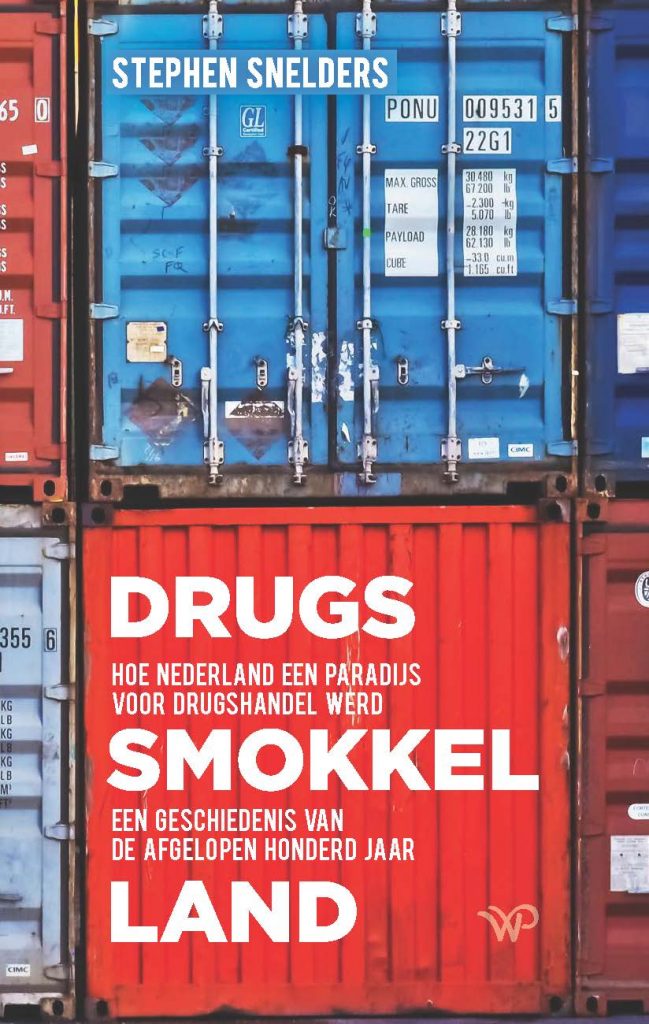
Drug Smuggler Nation IS OUT NOW
Drug Smuggler Nation: Narcotics and the Netherlands, 1920-1995, my new history of the Netherlands and drug smuggling in the twentieth century, is now out with Manchester University Press.

Lifestyle and disease in the long eighteenth century
The corona crisis demonstrates how easily too optimistic hopes for medical cures and faith in medical technology can turn in the most irrational rejection of medicine and the denial of disease. We are confronted with a health problem for which there is not yet a cure or a vaccin. It seems a question of individual constitution whether one gets contaminated with the virus, to what extent one develops symptoms of the disease, and if one will die. In fact we are in the same situation as our premodern ancestors, who had to survive diseases and epidemics without the benefits of cures.
This does not mean that they were necessarily helpless to manage health and disease. Classical medicine going back to Hippocrates gave them concepts and tools to strengthen their constitution and to prevent the onslaught of disease – at least, up to a point. For instance, social distancing, washing hands, and quarantine were measures regularly used when epidemics of the plague hit cities.
The attention to lifestyle in the prevention of disease and the problems of adhering to a healthy lifestyle in the long eighteenth century is investigated in detail in the recently published volume Lifestyle and Medicine in the Enlightenment: The Six Non-Naturals in the Long Eighteenth Century, edited by James Kennaway and Rina Knoeff. The volume examines what it meant to live healthily in the context of the six ‘non-naturals’ of Hippocratic medicine that determined one’s health and resistance to disease: airs and places, food and drink, exercise, excretion and retention, and sleep and emotions.
My own contribution discusses how Europeans survived in the tropical regions of the Dutch Atlantic: in West Africa, Brazil, an the Caribbean. I have written of this before in Dutch in my book Vrijbuiters van de heelkunde (now only available as ebook). In the article I focus in particular on the example of a surgeon from Amsterdam who went as ship’s surgeon to the Caribbean: Abraham Titsingh (1684-1776).
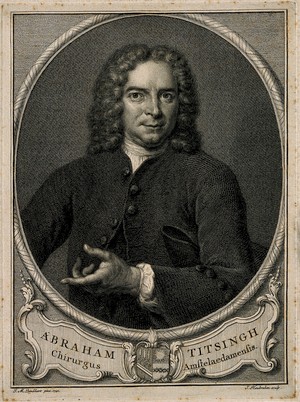
Titsingh was a proud man, a quarrelsome fellow quick on the lookout for trouble. He made many enemies, not in the least among his professional colleagues in the surgeons’ guild of the city of Amsterdam. He wrote of himself: ‘that he presumed to many liberties en had his own tricks. [But] one should consider, when he spoke a little to freely, that he was a freeborn Dutchman, an Amsterdammer, who spoke the truth without restraint for the honour of his fellow countryman, his contemporaries and his colleagues […] to show that there were men in Amsterdam and that it was unnecessary to send puppies to Paris to learn surgery.’
‘Experience at the sick bed was the main thing’, according to Titsingh, and he had a low view of even famous academics as Boerhaave, who he described as blinded by their school knowledge and misleading the young by their unproved sentiments. Both from an empirical and anti-authoritarian stance Titsingh disliked established medical science and this stimulated him to have an open ear in the tropics to its inhabitants, and to develop and implement naval expertise aiming at survival in the unhealthy hot climates, managing health through the six non-naturals.
New book on drug smuggling and the Netherlands out in 2020
The past years I have been working on a new history of drug smuggling and the Netherlands in the twentieth century, in the context of the project The Imperative of Regulation funded by NWO, the Dutch Organization for Scientific Research. I have now come to an agreement with Manchester University Press to publish a book on the subject in the course of 2020.
The book intends to show how and why the Netherlands developed in the course of the twentieth century into a central hub of the international illegal drug trade. The book details the responses of smugglers to the state regulation of the market and the increasing demand of consumers, and develops a model of ‘criminal anarchy’ to explain the successes of the illegal drug trade. By using a long-term historical perspective on ‘the Dutch experience’ the book further elaborates and modifies the criminological concept of ‘disorganized crime’. It situates ‘criminal anarchy’ within Dutch society: historically, socially and culturally embedded in both native and migrant communities with their own historical traditions.
Historical investigation leads to the conclusion that when drug policy focuses on the fight against the supply side law enforcement will win the occasional battle, but is unlikely to win the war against drugs. Rather the reverse is the case: fighting the supply side only stimulates the proliferation characteristic of criminal anarchy. Consumer demand is uncompromising when there is no access to an alternative legal supply of drugs.
I will unfold the patterns of criminal anarchy narrating and discussing among others smuggler-users, Sixties idealists turned smugglers, and criminal entrepreneurs. The book details the activities of native Dutch, Chinese, Greek, and other smugglers before and after the Second World War; the rise of the Dutch cannabis trade and cultivation and its global connections; the Chinese, Turkish and Kurdish heroin trade; the Colombian cocaine syndicates; and the rise of the synthetic drug industry and the subversion of the state by Dutch criminal networks in the south and elsewhere in the country.
